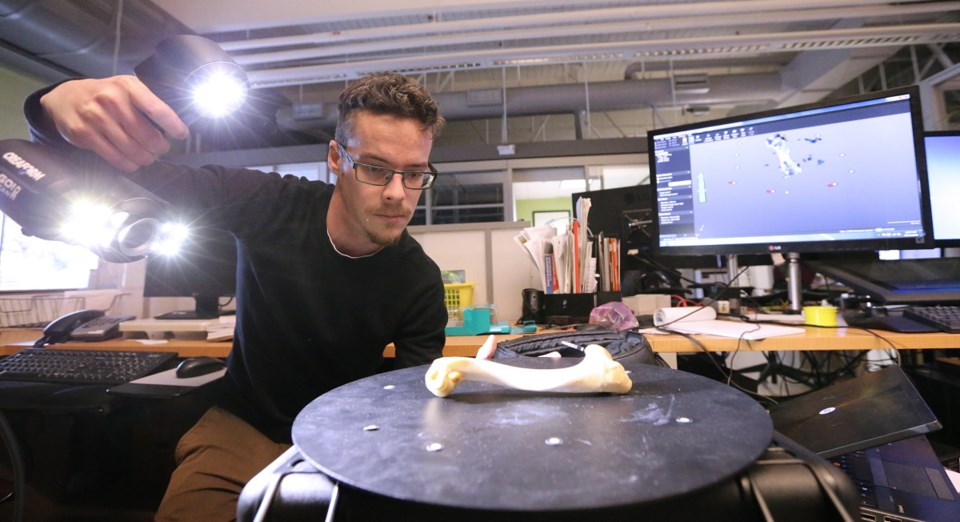Babcock Canada has donated $800,000 to launch a high-tech Interaction Lab at Camosun College’s Interurban campus, part of a fundraising effort that has exceeded expectations amid growing recognition that more skilled trades workers need to be trained to meet demand.
The donation from Babcock is the largest individual contribution to Camosun College Foundation’s TRADEmark of Excellence Campaign.
The college’s fundraising effort has surged past the original $5-million goal, reaching $6.5 million.
Funding the Interaction Lab made perfect sense to Mark Dixon, Babcock Canada president.
“It is in our interest, as well as the local economy and the people, to try and promote more people getting into the trades,” he said.
The Interaction Lab’s new equipment includes 3D printers, high-end scanners and virtual-reality technology. It allows students from different disciplines to work together using top-tier technology.
Students will broaden their experiences, have the chance to be innovative, use their analytical skills and get comfortable using the latest technology, Dixon said. “I think it kind of brings them into the modern age.”
Babcock Canada is a subsidiary of U.K.-based Babcock International, an engineering support-services organization serving customers around the globe.
In Victoria, Babcock has the in-service support contract for Canada’s submarines.
Tim Walzak, director of Camosun’s centre for applied research and innovation, said its current high-tech lab, called Camosun Innovates, is being expanded with the addition of the Babcock-funded equipment.
The new lab will be installed in renovated space in the Jack White building, serving Camosun’s school of trades and technology students.
The Babcock-funded technology will “really help us enhance what we already have,” Walzak said.
The installation will be completed by July.
“Once we move into the new space, it will give us great capacity to involve local companies in more and more projects,” Walzak said.
Firms will have access to services and equipment that they would not have otherwise, he said.
The lab’s open-door policy means all trades are welcome.
One example of trades in technology is development of the “CamoSun” solar-heating system and installation. Many plumbing and pipefitting students are doing extra work for certification in this field. When they graduate, “they are fully tuned in to the latest approaches,” Walzak said.
The 3-D technology means a small item can be scanned with laser or white light. Information from the scan is fed into a computer where it can be adjusted. Students can then print a 3-D model with their changes to try out. Dixon said this technology is already being used by Babcock to create equipment.
Scanners can be used to gather information on a large area, such as a ship’s hull, and once that information goes into a computer, students can design what goes into that area.
The TRADEmark campaign, which dovetailed with the new $30-million trades-training building at Camosun, raised money to buy equipment and renovate buildings.
Donations came from individuals and companies, some owned by second- and third-generation families. Family gifts alone account for more than $1 million. Unions donated a total of $250,000.
The campaign’s goal is to create a “trades powerhouse” at Camosun, said Murray Farmer, who chaired the initiative with wife Lynda.
“From my point of view, you spend so much of your life working, you better be doing something that you really like. And if you can have a passion for what you are doing, you are going to do a better job, you are going to be more productive and you are going to just have a more fulfilled life.”



